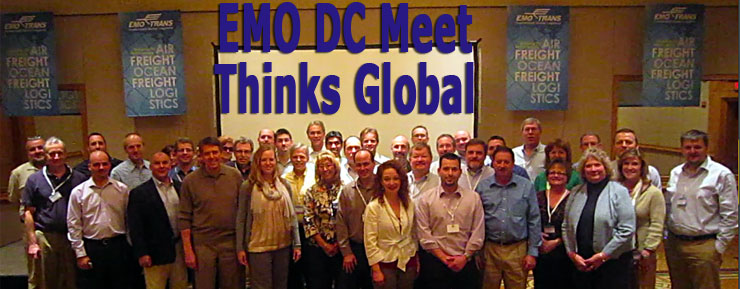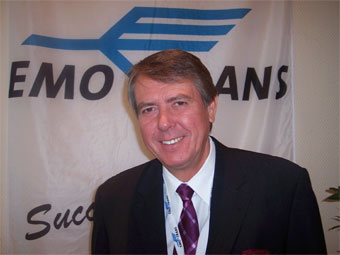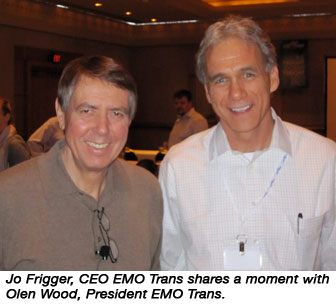
 Set
'Em Up Jo Set
'Em Up Jo
I got a
little story you oughta know.
While the big trade organizations, governing
bodies and air cargo airlines are conducting their gatherings as the
Spring/Summer 2010 season unfolds, Air Cargo News FlyingTypers
is spending a few days with EMO Trans at their Global Annual Meeting
in Washington, D.C.
The first thing you notice about the meeting
is that planning is thorough and exact, and includes plenty of time
for EMO people from Korea, Australia, Germany, Chile, Canada, USA –
you name it, meetings are ongoing from right after breakfast until sundown
in almost every available space at the modern downtown Washington, D.C.
Hotel.
From 0900 to 1730, these meetings are
continuous and involve just about everybody.
The agenda set up here rivals some bigger
trade show organizations, although since this is a company meeting,
the tradition of sugar coating the opening plenary is traded in for
straight from the shoulder “where are we now” opening addresses
from Jo Frigger, CEO EMO Trans USA and Stefan Ritter, Managing Director,
EMO Trans Germany.
From out of the gate, first morning topics
include a look at sales during 2010 and beyond, plus an airline view
delivered by Oliver Evans, MD of Swiss Cargo and Jack Lampinski, CSM
Swiss USA.
The morning opening is followed by a roundtable
event for everyone dealing with the hot button issue of compliance and
security, involving several participants and EMO executives.
 All of this is covered before high noon
on the first day of the EMO Global Network Meeting.
All of this is covered before high noon
on the first day of the EMO Global Network Meeting.
The rest of the event, which culminates
Thursday, is a non-stop set of meetings upon meetings punctuated with
large social networking events, including the opening gala held here
at the Kennedy Center on Sunday evening.
EMO Trans began providing professional
air freight services in Germany in 1965.
During the past 45 years EMO Trans has
grown and now has solutions for air cargo, ocean freight, distribution
and warehousing via 250+ offices located in over 120 countries.
Bells and whistles services include offering
door-to-door control for every shipment and global visibility through
local representation and knowledge of the unique characteristics of
each market.
“We build our market presence with
careful planning and total customer service,” says Joachim Frigger.
The company also keeps its team on the
same page by doing a little out of the box side step, in addition to
the annual meeting and empowering office visits, by offering the EMO
Trans Cookbook.
Through the Cookbook, EMO Trans shows
true originality in recognizing and acknowledging the varied cultures
of the EMO employees and the world the company serves.
Filled with page upon page of local favorite
recipes from people in its far-flung network of offices, the EMO Trans
Cookbook offers a unified vision of the company and shows what makes
for a true recipe for success: the ability to stay close to the ground,
stock your ranks with good people, and always keep close to the customer.
We know all this because we cover EMO
Trans here in ACNFT often.
What we weren’t fully aware of is
that there were so many delectable dishes at work in the same place
at the same time.
Talk about victorious victuals!
"What we did,” said EMO Trans
boss Jo Frigger, “was to ask people from all of our global offices
to submit recipes that were personal or family favorites in order to
capture the flavor of our worldwide group and share some favorite meals
with friends and business colleagues.”
So what’s on the menu for Washington,
D.C.?
Stay tuned.
Geoffrey/Flossie Arend
|



